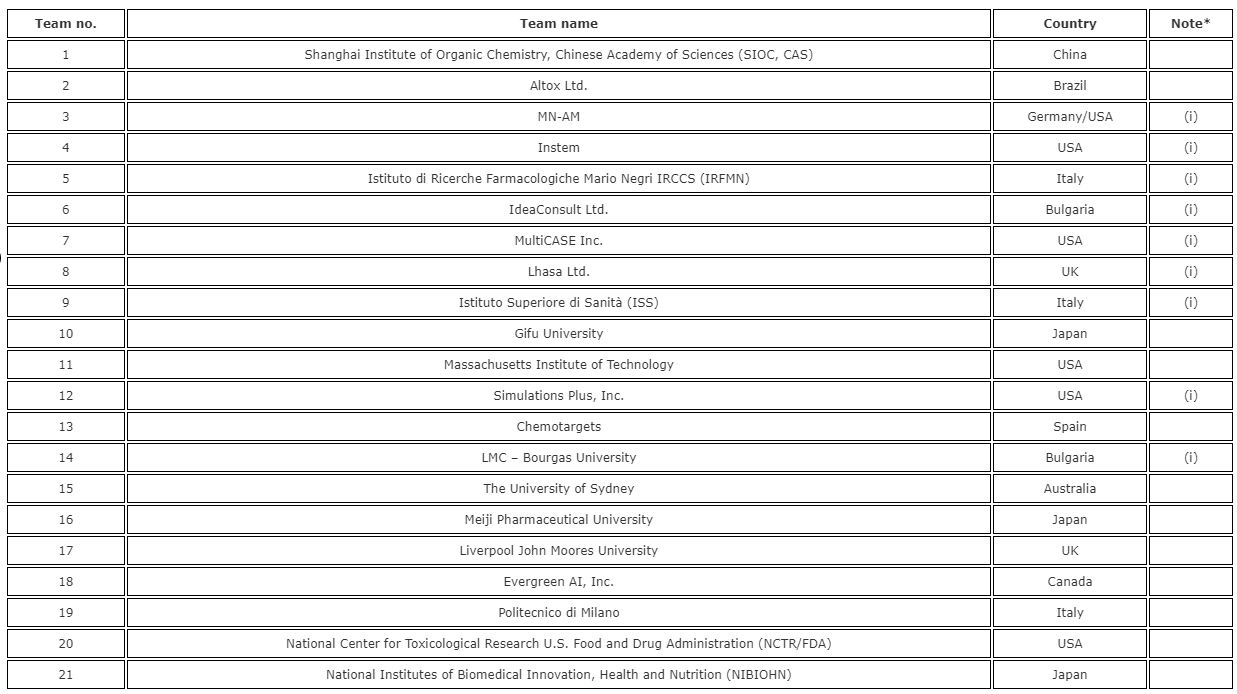Evaluation of QSAR models for predicting mutagenicity: outcome of the Second Ames/QSAR international challenge project
https://doi.org/10.1080/1062936X.2023.2284902
Quantitative structure−activity relationship (QSAR) models are powerful in silico tools for predicting the mutagenicity of unstable compounds, impurities and metabolites that are difficult to examine using the Ames test. Ideally, Ames/QSAR models for regulatory use should demonstrate high sensitivity, low false-negative rate and wide coverage of chemical space. To promote superior model development, the Division of Genetics and Mutagenesis, National Institute of Health Sciences, Japan (DGM/NIHS), conducted the Second Ames/QSAR International Challenge Project (2020–2022) as a successor to the First Project (2014–2017), with 21 teams from 11 countries participating. The DGM/NIHS provided a curated training dataset of approximately 12,000 chemicals and a trial dataset of approximately 1,600 chemicals, and each participating team predicted the Ames mutagenicity of each trial chemical using various Ames/QSAR models. The DGM/NIHS then provided the Ames test results for trial chemicals to assist in model improvement. Although overall model performance on the Second Project was not superior to that on the First, models from the eight teams participating in both projects achieved higher sensitivity than models from teams participating in only the Second Project. Thus, these evaluations have facilitated the development of QSAR models.
